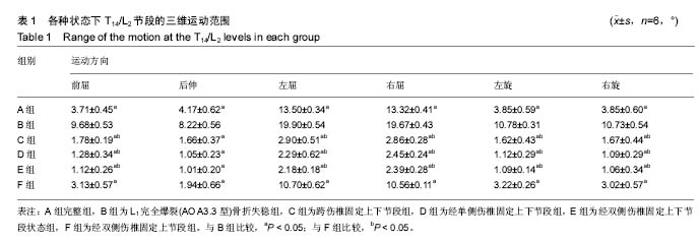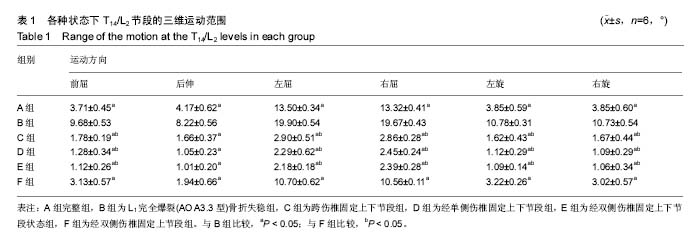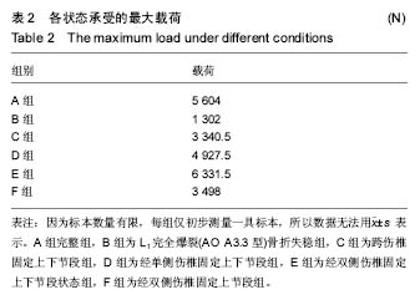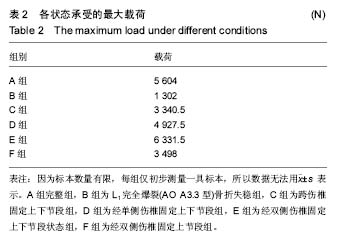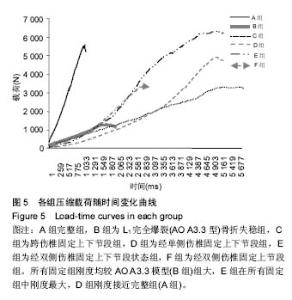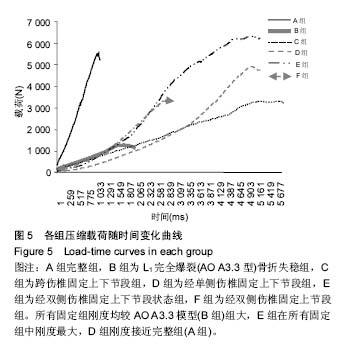| [1] Verlaan JJ, Diekerhof CH, Buskens E, et al. Surgical treatment of traumatic fractures of the thoracic and lumbar spine: a systematic review of the literature on techniques, complications, and outcome. Spine (Phila Pa 1976). 2004; 29(7):803-814.[2] Magerl F, Aebi M, Gertzbein SD, et al. A comprehensive classification of thoracic and lumbar injuries. Eur Spine J. 1994;3(4):184-201.[3] Panjabi MM, Kifune M, Wen L, et al. Dynamic canal encroachment during thoracolumbar burst fractures. J Spinal Disord. 1995;8(1):39-48.[4] Hu Z, Zhou Y, Li N, et al. Correlations between posterior longitudinal ligament status and size of bone fragment in thoracolumbar burst fractures. Int J Clin Exp Med. 2015; 8(2):2754-9.[5] Vu TT, Morishita Y, Yugue I, et al. Radiological outcome of short segment posterior instrumentation and fusion for thoracolumbar burst fractures. Asian Spine J. 2015;9(3): 427-432.[6] Tezeren G, Kuru I. Posterior fixation of thoracolumbar burst fracture: short-segment pedicle fixation versus long-segment instrumentation. J Spinal Disord Tech. 2005;18(6):485-488.[7] Hirano T, Hasegawa K, Takahashi HE, et al. Structural characteristics of the pedicle and its role in screw stability. Spine (Phila Pa 1976). 1997;22(21):2504-2509; discussion 2510.[8] Li C, Zhou Y, Wang H, et al. Treatment of unstable thoracolumbar fractures through short segment pedicle screw fixation techniques using pedicle fixation at the level of the fracture: a finite element analysis. PLoS One. 2014;9(6): e99156.[9] Pellisé F, Barastegui D, Hernandez-Fernandez A, et al. Viability and long-term survival of short-segment posterior fixation in thoracolumbar burst fractures. Spine J.2015; 15(8):1796-1803.[10] Sait A, Prabhav NR, Sekharappa V, et al.Biomechanical comparison of short-segment posterior fixation including the fractured level and circumferential fixation for unstable burst fractures of the lumbar spine in a calf spine model. J Neurosurg Spine. 2016;25(5):602-609.[11] Chen JX, Xu DL, Sheng SR, et al. Risk factors of kyphosis recurrence after implant removal in thoracolumbar burst fractures following posterior short-segment fixation. Int Orthop. 2016;40(6): 1253-1260.[12] Wood KB, Li W, Lebl DR, et al. Management of thoracolumbar spine fractures. Spine J. 2014;14(1):145-164.[13] Grossbach AJ,Viljoen SV,Hitchon PW,et al.Vertebroplasty plus short segment pedicle screw fixation in a burst fracture model in cadaveric spines.J Clin Neurosci. 2015;22(5):883-888.[14] 朱海明,丁亮,张东,吴鸣,等. 胸腰椎爆裂性骨折短节段伤椎固定三维有限元模型构建及生物力学比较研究[J]. 中国矫形外科杂志,2015,23(10):917-920.[15] kten A?, Gezercan Y, Özsoy KM, et al. Results of treatment of unstable thoracolumbar burst fractures using pedicle instrumentation with and without fracture-level screws. Acta Neurochir (Wien). 2015;157(5):831-836.[16] Norton RP, Milne EL, Kaimrajh DN, et al. Biomechanical analysis of four- versus six-screw constructs for short-segment pedicle screw and rod instrumentation of unstable thoracolumbar fractures. Spine J. 2014;14(8): 1734-1739.[17] Kanna RM, Shetty AP, Rajasekaran S. Posterior fixation including the fractured vertebra for severe unstable thoracolumbar fractures. Spine J. 2015;15(2):256-264.[18] Dobran M, Nasi D, Brunozzi D, et al. Treatment of unstable thoracolumbar junction fractures: short-segment pedicle fixation with inclusion of the fracture level versus long-segment instrumentation. Acta Neurochir (Wien). 2016;158(10):1883-1889.[19] Anghel S, Marton D. Short segment fixation versus short segment fixation with pedicle screws at the fracture level for thoracolumbar burst fracture. Acta Medica Marisiensis. 2014;60(2):49-52.[20] 张贵春,张科,陈晨,等. 单侧或双侧伤椎置钉治疗胸腰段爆裂骨折的比较[J]. 实用骨科杂志,2017,23(4):289-292.[21] 闫石,苏峰,张志敏. 经伤椎置钉对椎弓根皮质劈裂合并椎体骨折的生物力学稳定性的影响[J]. 中国医学科学院学报, 2014, 36(4):415-419.[22] Wang XS, Wang XF. Treatment of thoracolumbar burst fractures with limited decompression and injured vertebra pedicle screw fixation. Chin J Minimall Inv Surg. 2014;14(8): 719-722.[23] Guven O, Kocaoglu B, Bezer M, et al. The use of screw at the fracture level in the treatment of thoracolumbar burst fractures. J Spinal Disord Tech. 2009;22(6):417-421.[24] 刘潮坚,蔡拉加,石昭宏,等. 伤椎置钉与不置钉短节段内固定治疗胸腰椎爆裂骨折的比较[J].中国矫形外科杂志, 2016, 24(6): 531-535.[25] 潘兵,张志敬,宋舟锋,等. 胸腰椎骨折伤椎短椎弓根钉固定的生物力学研究[J]. 中国矫形外科杂志, 2013,21(4):368-372. [26] Bolesta MJ, Caron T, Chinthakunta SR, et al. Pedicle screw instrumentation of thoracolumbar burst fractures: Biomechanical evaluation of screw configuration with pedicle screws at the level of the fracture. Int J Spine Surg. 2012;6: 200-205. [27] Dhawale AA, Shah SA, Yorgova P, et al. Effectiveness of cross-linking posterior segmental instrumentation in adolescent idiopathic scoliosis: a 2-year follow-up comparative study. Spine J. 2013;13(11):1485-1492. [28] Burney MU, Mukherjee DP, Ogden AL, et al. A biomechanical study of posterior spinal instrumentation using pedicle screws with and without cross-links. J Spinal Disord Tech. 2005;18(4): 364-368.[29] 顾宇彤,姜晓幸,董健,等. 经伤椎微创椎弓根钉内固定术治疗胸腰椎爆裂性骨折[J].中国骨与关节外科, 2014,7(5):408-411+407. |
